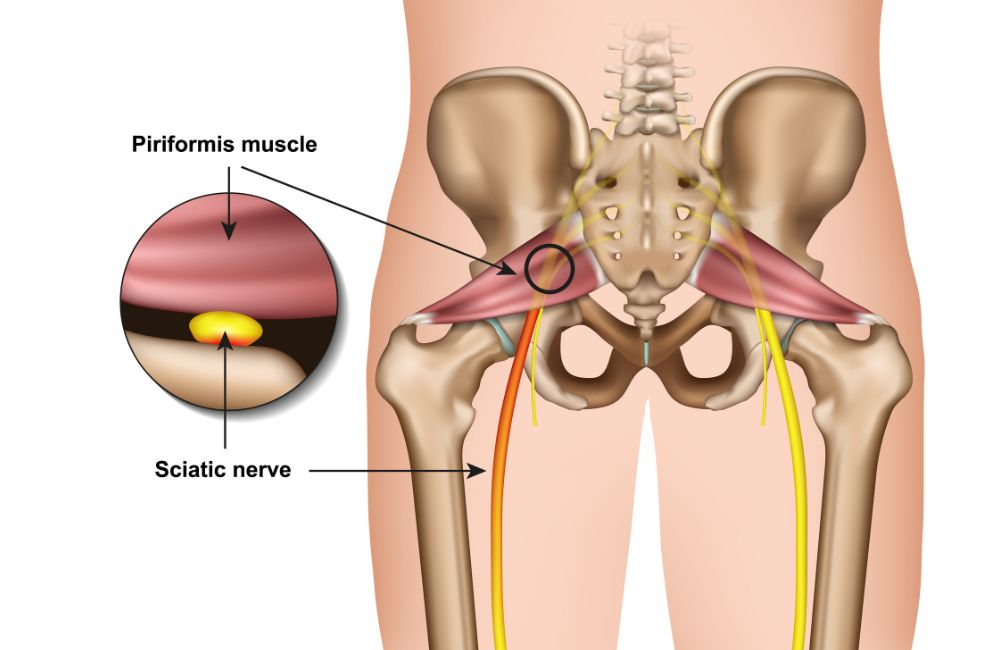
If you’ve experienced sciatica pain, you know how painful and excruciating a pinched nerve can be.
This problematic ailment can cause unbearable pain that shoots from the low back all the way to the foot.
Worse yet, it can also cause weakness in the muscles it innervates, and some of this weakness can even become permanent.
Luckily, many cases of sciatica can be relieved by performing simple, tried-and-true exercises (1).
5 Best Sciatica Exercises for Immediate Pain Relief
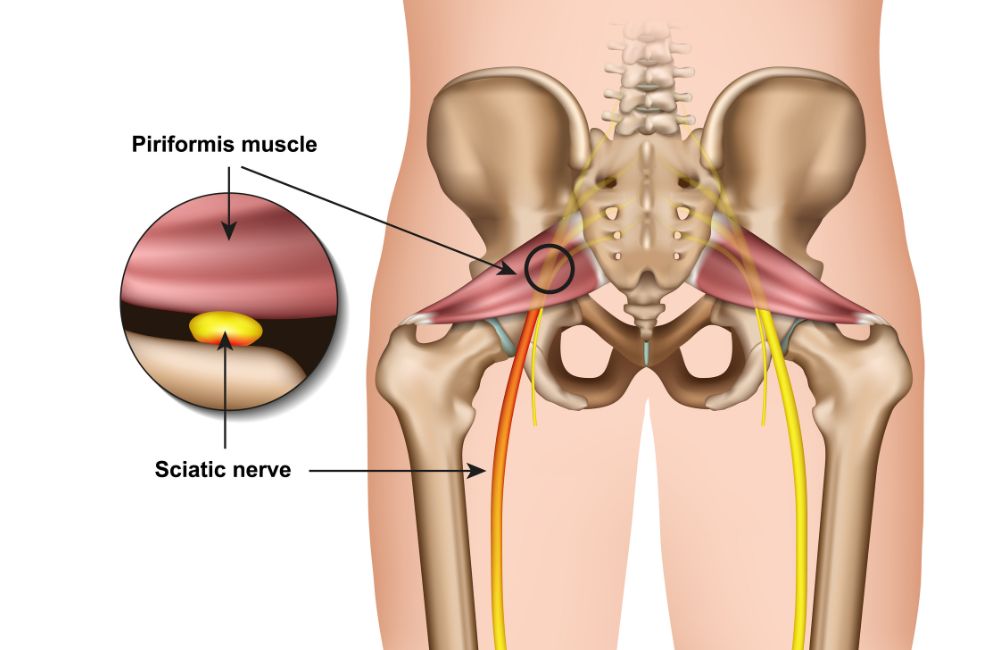
You’ll also like:
5 Best Stretches to Get Rid of Sciatica Hip and Lower Back Pain
Want To Live Pain-free? Do These Hip and Lower Back Stretches Every Day
1. Single Knee to Chest
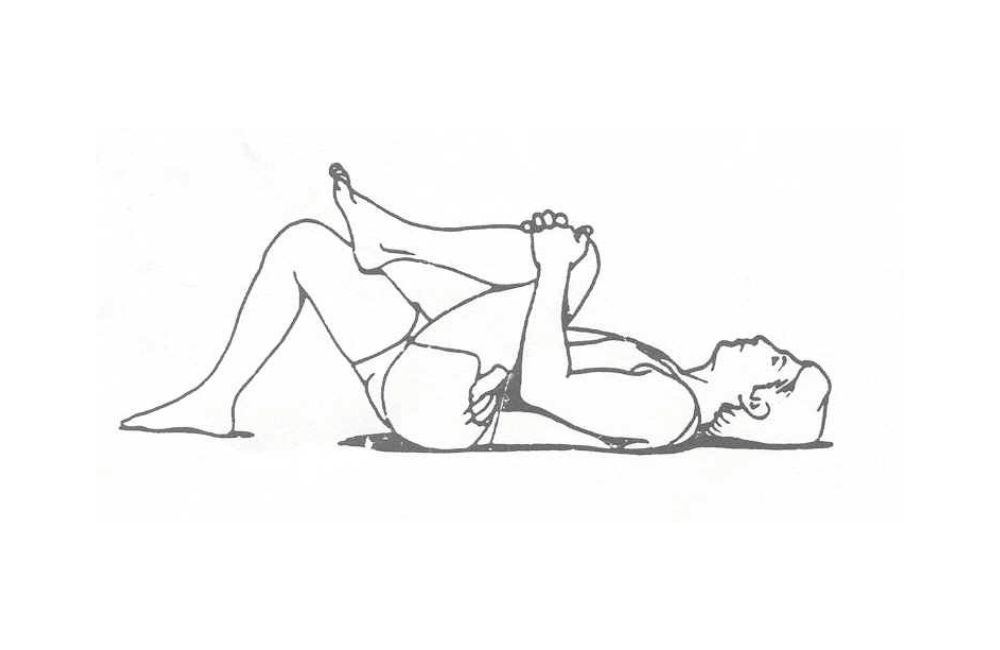
Single Knee to Chest (often abbreviated SKTC) is a great exercise for loosening up the glute and hamstring muscles. This is a good starter movement for people who have very intense symptoms, as this stretch is quite gentle overall.
How to Perform
- Lie flat on your back, with both knees bent and the soles of your feet resting on the floor.
- Next, lift your right knee up toward your chest and grasp it with both hands.
- Hold this stretch for 30 seconds and repeat it 4 times on each side daily.
2. Posterior Pelvic Tilts
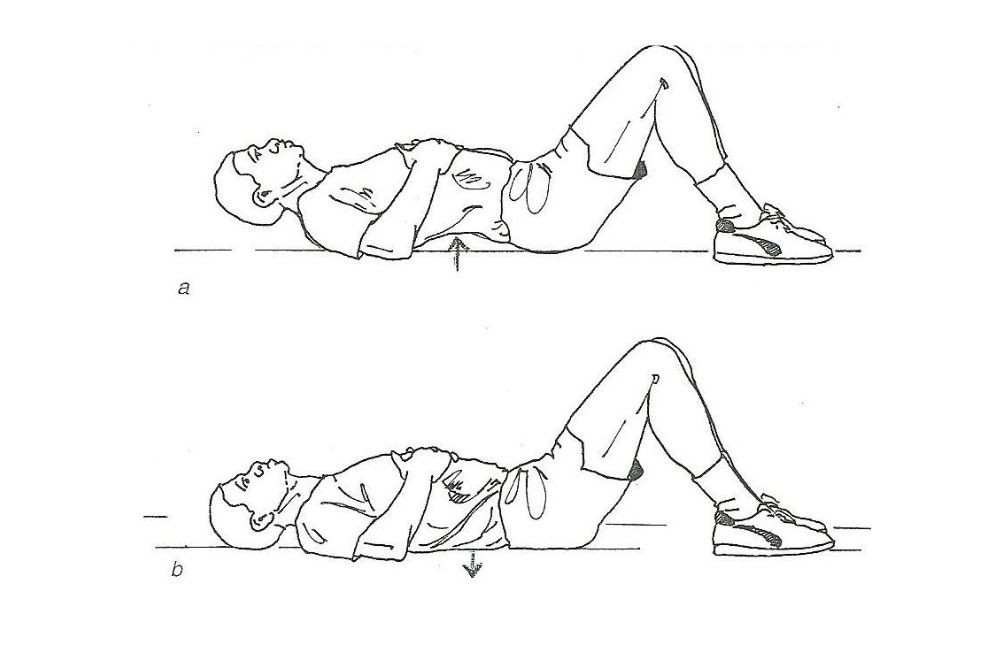
Even though this exercise looks easy, it’s one of the most difficult moves to master. This exercise requires coordination from your hip, low back, abdominal, and pelvic floor musculature. But once you get it down, it can really help with your low back pain symptoms.
How to Perform
- Start by lying on your back with your knees bent to roughly 90 degrees. Make sure that your feet are flat on the floor.
- Next, contract your abdominal muscles as you squeeze your glutes.
- As you do this, you should feel your low back push gently into the ground.
- Hold this position for 10 seconds, relax, and repeat 10 times per day.
3. Seated Hamstring Stretch
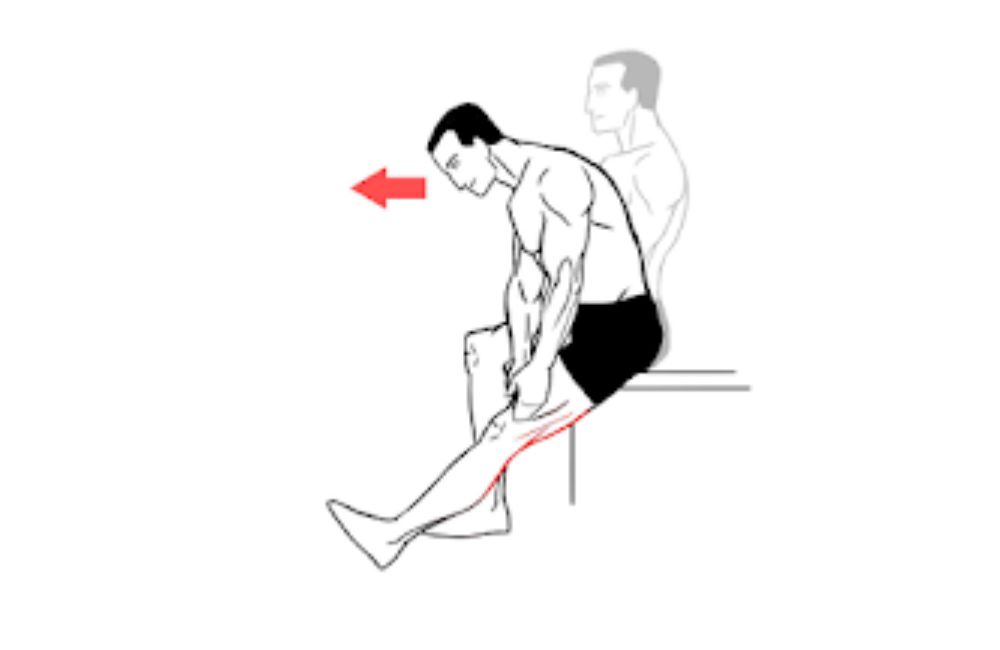
The hamstrings are often a troublesome muscle when it comes to low back pain. By keeping them loose and flexible, you can prevent or reduce any low back pain or sciatica symptoms.
How to Perform
- Sit in a comfortable, yet firm chair.
- Very slowly, straighten out your knee on the painful side until you feel a mild stretch in the back of your thigh.
- If you’ve fully straightened out your knee, and this doesn’t produce symptoms, you can then bend your toes backward to deepen the stretch.
- Hold this position for 30 seconds and repeat it 4 times on each side daily.
4. Prone on Elbows
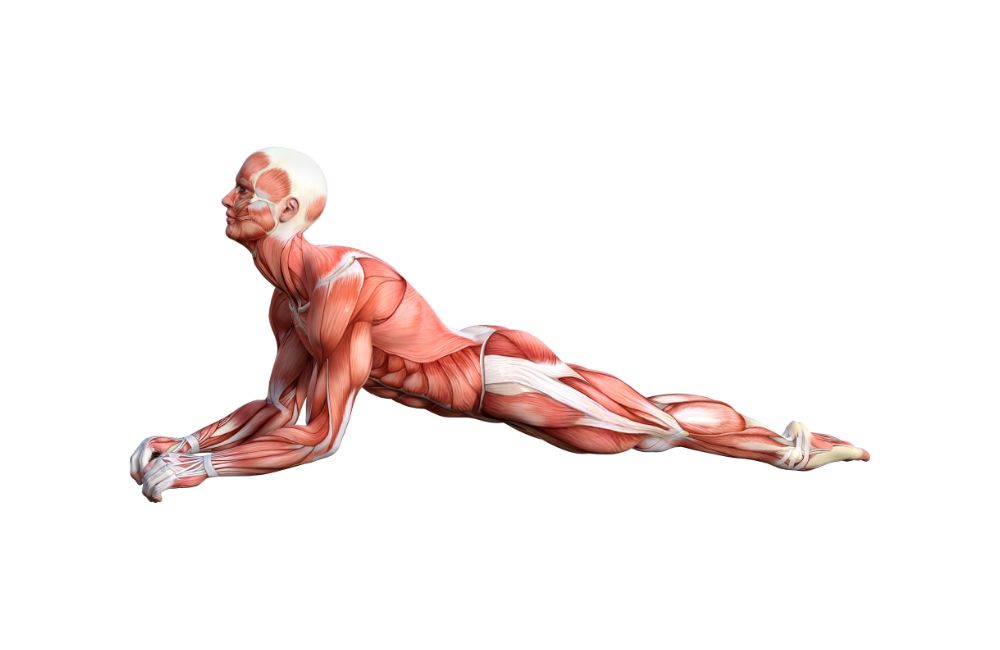
Cobra pose, or prone on elbows, is an extension-based stretch. This move is often seen as a regression from the upward-facing dog stretch, which is a staple of many yoga classes.
Therefore, it’s the perfect exercise for restoring back range of motion and reducing pain in patients with sciatica.
How to Perform
- Lie on your stomach.
- Prop yourself up on your elbows.
- Hold this position for 30 seconds to two minutes, once per day.
5. Prone Hamstring Curls
Earlier, I outlined a good stretch for the hamstrings. But it’s also important to keep these muscles strong as well as flexible.
You can perform hamstring curls in many ways, and with many different pieces of equipment such as bands, machines, and even swiss balls.
For our purposes, I’ll outline the version using ankle weights.
How to Perform
- Lie on your stomach, with cuff weights wrapped around both ankles.
- Slowly, bend your knee, bringing your ankle as close as possible to your buttocks.
- Hold for 3 seconds, then straighten out your leg again.
- Complete 10-12 reps per side, per session, and complete 3 sessions per week.
Bonus# 6: Squats
Squats are another terrific exercise for strengthening the key muscles of the lower body. This movement is functional and helps to keep people independent all throughout life.
How to Perform
- Start standing, with your feet roughly hip-width apart.
- Push your hips back as you simultaneously bend your knees, as if you are sitting down in a chair.
- Once you’ve lowered as far as you can without breaking form, reverse this motion and stand back up.
- Perform 10-12 reps per set, for 3 sets per session. 3 times per week.
Conclusion
Sciatica is no fun. This issue creates serious problems for patients, some of which can last for months or years.
But by keeping your body strong and flexible, you can put yourself in the best position to avoid or reduce the severity of symptoms of this condition (2).
Works Cited
- Koes, B. W., van Tulder, M. W., & Peul, W. C. (2007). Diagnosis and treatment of sciatica. BMJ (Clinical research ed.), 334(7607), 1313–1317. https://doi.org/10.1136/bmj.39223.428495.BE
- Gordon, R., & Bloxham, S. (2016). A Systematic Review of the Effects of Exercise and Physical Activity on Non-Specific Chronic Low Back Pain. Healthcare (Basel, Switzerland), 4(2), 22. https://doi.org/10.3390/healthcare4020022


